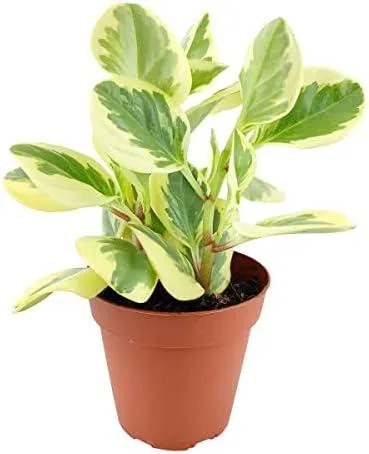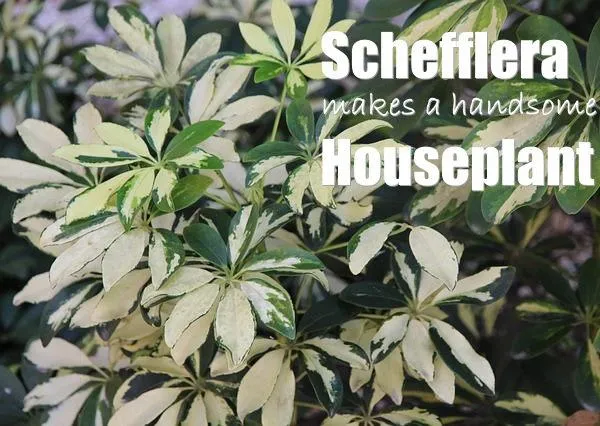A Guide to Variegated House Plants: Understanding Their Unique Leaf Patterns
If you’ve ever spotted a house plant with striking white, yellow or pink markings across its leaves, you’ve seen variegation in action. Variegated plants have unique patterns that make them stand out from their plain green counterparts. But what exactly causes this color variation, and how do you care for plants with variegated leaves? In this article, I’ll delve into the world of variegation and answer all your questions about these eye-catching plants.
What is Variegation?
Variegation occurs when there is a loss of chlorophyll production in some plant cells, resulting in markings of a different color like white, cream or yellow across the leaves. The normal green pigment chlorophyll is what gives most plant leaves their green appearance. But in variegated plants, certain sections of leaves lack chlorophyll and instead produce color pigments like carotenoids that appear in other hues.
There are a few main types of variegation:
- Sectored variegation – Distinct sectors or patches of green and white on each leaf
- Blotched variegation – Irregular white blotches on an otherwise green leaf
- Marginal variegation – A white or yellow border along the edge of each leaf
From my experience as an avid house plant collector, sectored variegation creates the most dramatic leaf patterns and is the type seen in popular plants like marble queen pothos.
What Causes Variegation?
The exact genetic or physiological cause behind variegation is still being studied, but it often comes down to mutations in plant cells that disrupt chloroplast formation. These mutated cells don’t produce normal green chloroplasts needed for photosynthesis. Some potential causes scientists have identified include:
– Viral or bacterial infections that alter chloroplast development
– Genetic mutations arising spontaneously or through breeding
– Physiological factors like nutrient deficiencies or hormonal imbalances
Plants pass on variegation through stem cuttings, so it becomes a dominant trait that home gardeners can propagate. While variegated forms are rare in nature, selective plant breeding has brought out their beauty for house plant collections.

Caring for Variegated Plants
So in summary, variegated plants have splotchy colors due to lacking ample chloroplasts. But how does their appearance impact care? Here are a few tips:
– Light needs: Variegated plants often need brighter light than all-green varieties. Their white or yellow sections don’t photosynthesize as efficiently. Place in eastern or western windows.
– Growth rate: Expect slower growth. The variegated patches are less photosynthetically active. Fertilize monthly in spring/summer.
– Pruning: Cut off sections that are all white/yellow as they won’t recover. Propagate useful stem cuttings.
– Stress tolerance: Variegated plants are generally less hardy. Avoid drafty spots prone to temperature swings.
– Pests: Check regularly for pests like spider mites that are attracted to weakened variegated areas. Treat promptly if spotted.
I’ve found keeping variegated plants in bright, consistent conditions helps maximize their variegation patterns without stressing the plant. With a little extra care, their striking leaves thrive indoors for many years.
Popular Variegated House Plants
Now that the basics are covered, here are some of the most common and beautiful variegated plants suitable for home gardens:
- Marble queen pothos: Classically gorgeous with white marbled patches. Extremely hardy and tolerate low light. Great for trailing over shelves.
- Chinese evergreen: Wide range of leaf patterns from white-edged to speckled. Makes a lush, textured accent. Water sparingly to prevent browning.
- Peperomia: Mini houseplants with unique leaf shapes. Variegated types add eye-catching color above small plants. Excellent for windowsills.
- Philodendron: Huge assortment like selloum/monstera deliciosa. Majestic foliage great for filling space. Keep soil slightly drier than for solid green varieties.
- Fittonia: aka “nerve plant” – striking red veining contrasts white or pink patches. Fun flush of colors but more temperamental than others.
Of course, this only scratches the surface. New variegated cultivars are constantly being developed by plant breeders. Keep exploring to discover your own favorites!
Dealing with Chlorosis
A common problem variegated plants face is chlorosis, or yellowing of the leaves. The white or pale sections are prone to turning completely yellow without normal green chloroplast production. Here are signs it may be happening:
– New growth comes in all yellow without any green
– Once dark green areas fade to pale yellow
– Leaves feel thinner, droopier than normal

Often chlorosis stems from light or care imbalances like overwatering soil that’s too rich or crowded pots limiting drainage. To bounce back:
– Move to a brighter window and avoid dark corners
– Repot in fresh, well-draining soil mixed with perlite or bark
– Flush pot thoroughly and allow to dry out between waterings
– Consider fertilizing monthly for a boost in spring/summer
– Prune severely chlorotic leaves that don’t recover color
With some tweaks to correct the underlying issue, most variegated plants will perk back up given the proper conditions. And their pretty leaves remain well worth the occasional extra attention.
Propagating Variegation
Many variegated plants are propagated through stem cuttings to maintain their unique patterns. Here’s a quick tutorial:
– Take 4-6″ cuttings from the plant’s strongest stems
– Use a sterile blade to trim just below a leaf node
– Remove lower leaves, leaving 2-3 sets at the top
– Allow cut end to callous slightly before inserting in soil
– Pot in well-draining soil and keep moist in bright, warm spot
– Check soil regularly and don’t let dry out completely
– Roots should form within 4-6 weeks – then transplant or gift!
By taking cuttings, you ensure the new growth will come back variegated rather than reverted to plain green. And sharing variegated plants is a fun way to brighten up friends’ homes too!
Final Thoughts
Overall, variegated plants offer an interesting glimpse into plant biology along with lovely decorative foliage. While requiring some specialized care, their patterns make fantastic accents for any environment. I hope this overview answered all your questions! Feel free to experiment with different varieties – you never know which beauty will become your new favorite. With basic understanding and attention, variegated leaves can give years of enjoyment indoors. Happy plant collecting!

Choosing House Plants with Variegated Leaves
| Plant | Description | Care Tips |
|---|---|---|
| Pothos | Hardy vine with heart shaped green and yellow leaves. Variegation ranges from solid yellow to stripes. | Low light. Allow soil to dry between waterings. |
| Philodendron | Vining plant with large rounded leaves featuring pink, cream or yellow variegation. | Medium light. Keep soil slightly moist. |
| Peperomia | Small plant with thick succulent-like leaves coming in red, pink and cream variegation. | Bright indirect light. Allow top inch of soil to dry. |
| Chinese Evergreen | Shrub-like plant with waxy deep green leaves edged in cream or yellow. | Medium to low light. Water when top inch of soil feels dry. |
| Dieffenbachia | Tropical plant featuring pointed leaves with central white stripes. | Medium light. Keep soil evenly moist. |
FAQ
-
What causes variegated leaves?
Variegated leaves are caused by a genetic mutation. This mutation prevents some areas of the leaf from producing chlorophyll, which is what makes leaves appear green. As a result, those areas remain white or another color.
-
Do variegated leaves affect plant health?
For the most part, variegated leaves don’t negatively impact plant health. However, areas without chlorophyll cannot perform photosynthesis. So plants with a lot of white variegation may grow more slowly. As long as the plant still has some green areas, it’ll be fine. Still, these parts essentially act as if in partial shade.
-
Will the variegation pattern stay the same?
The variegation pattern usually remains stable through propagation. But there is always a small chance the mutation could revert back to solid green leaves. So the variegation might fade over time for some clones. However, many variegated cultivars have been maintained for generations. So the pattern tends to keep its form.
-
What kinds of plants have variegated leaves?
Many popular houseplants develop delightful variegated forms. Pothos, philodendron, monsteras and marantas commonly sport white or yellow patterns. Peace lilies and Chinese evergreens also offer vibrant variegated selections. Basically, variegation can pop up in all sorts of plant families. It’s kind of like a wild card – you never know what species may surprise you with a fun mutation!
-
Do variegated leaves affect plant function?
As discussed before, the areas missing chlorophyll cannot photosynthesize. Nevertheless, as long as a decent amount of green remains, variegated plants still perform all their necessary functions. At the same time, plants may use water and nutrients sort of ineffectively in white sections. However, horticulturalist David Clark suggests variegated plants “are not inherently less healthy.” On the other hand, heavily variegated forms could face more issues with energy demands. I guess it depends on the individual plant!
-
Are variegated plants higher maintenance?
Generally speaking, variegated houseplants require similar care to their solid green counterparts. You still need to water, feed and provide adequate light appropriately. However, because white parts cannot photosynthesize, variegated plants may dry out faster. So you’ll likely need to water more regularly. You may also want to move variegated beauties slightly farther from windows to prevent sun scorch on pale sections. Other than that, stick to the usual routines!
-
How can I propagate variegated plants?
Luckily, propagating variegated houseplants is basically the same process as regular plants. Take stem or leaf cuttings and root them in water or soil. You can also divide crowded clumps. The new growth should retain the awesome patterns. However, there is always a small chance variegation levels could change with succeeding generations. To stay on the safe side, it’s better to purchase authenticated cultivars from a reputable nursery if preserving the design is important. But most often, the novelty marbled leaves will be passed on!

